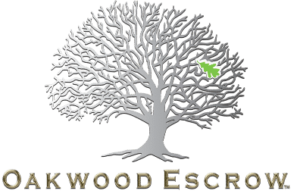The Closing Disclosure
Buying or Selling a home is an exciting time. Although it could be overwhelming and stressful, it is a time of new beginnings. Throughout the process of buying or selling a home there are so many things that you will learn along the way. Some things will seem easy to grasps while other will go right over your head. The best thing you can do during your home buying or selling process is to ask questions. One of the most important documents that you will need to read and understand is your Closing Disclosure.
The Closing Disclosure is a document that you will receive from your Lender to review. Your lender is required by law to send you the Closing Disclosure at least three business days before you close the close of escrow. The reason they must send this to you at least three business days before you close is to give you time to review the documents, ask questions, and get any necessary adjustments made to the closing disclosure before the close of escrow.
The closing disclosure outlines the final details of your loan, including the loan terms, your monthly payments, interest rate, your loan amount, purchase price, and closing costs. These are just a few items that will be included in your closing disclosure. When reviewing your closing disclosure, you want to review it thoroughly. Here is a list of some items that you may want to look at closely on the closing disclosure by page:
The Pages of the Closing Disclosure
Page 1:
General Closing Information: In this section of the closing disclosure, you will want to make sure that all the basic information is correct. Does your lender have the correct closing date, title company, property address, and sales price?
Transaction Information (top middle of the 1st page): Under the “Borrower” section, make sure that your name is spelled correctly, and that the lender has the correct address for you.
Loan Information: It is very important that you check the loan terms in this section, make sure they are what you were expecting. This section will give you your loan term, what the purpose of the loan is for, and the type of loan you have.
Loan Terms: This section is important for you to review as it will have your loan amount, interest rate, and your Monthly payment amount (Principal & Interest Only). Also, something to glance at is just to the right of information, there are yes, no wording next to the amounts, the Yes or No will tell you if the amount shown to the left can increase after closing.
Projected Payments: Don’t pass over this section, this section show you’re your estimated total monthly payments which includes a breakdown of your Principal & Interest plus mortgage insurance and estimated escrow all together in one estimated total. If these numbers don’t look correct or not what you were thinking, reach out to your lender.
Costs at Closing: Your closing costs include any loan costs as well as any additional cost that sometimes includes, HOA payments, recording Fees, title fees, etc. It also show the cash to close, which is the amount of money you will need to bring to closing.
Page 2:
Loan Costs: This section provides you with a breakdown of loan origination charges, third party service provider fees, and any title/escrow fees. If you have questions about these fees, now is the time to ask your lender.
Other Costs: This section will have the breakdown of your recording fees, anything that will need to be prepaid at the close of escrow (homeowner’s insurance, mortgage insurance, property taxes), HOA fees, home inspection fee, title insurance. Be sure to double check your cost and make sure that the fees you are being charged are the things you are paying for, sometimes depending on your contract the Seller will pay for some of these items. If you are not sure, ask your lender or your escrow officer to help you with the breakdown of the Other Costs.
Page 3:
Calculating Cash to Close: On page 1 of the closing disclosure under cost at closing, there was an amount that you need to bring to closing for your cash to close. This section gives you a full breakdown of the money needed to close.
Summaries of Transaction: This section gives you a summary of the items you looked at on page 1 and 2 of the closing statements. The one thing that I would double check and look at in this section is seller credit, this will show that amount if any that the seller is crediting to the buyer. If you agreed on any credits, this is where they will be, make sure the amount is correct.
Page 4:
Loan Disclosures: Read this page carefully as it has important information regarding late loan payment, partial loan payments, and your escrow account with you lender if you have one.
Page 5:
Loan Calculation: This section shows the breakdown of your loan.
Other Disclosure: Read this section as it will have more information on your appraisal, liability after foreclosure, and a few more items that are important to read for your own understanding and knowledge.
Contact Information: This section is self-explanatory, it has the contact information for your lender, realtor, and escrow company.
Confirm Receipt: You will need to sign this section as soon as possible. This is only confirming that you received the closing disclosure, not that you accept any terms of it.
Now that you have an overview of what to look for on your closing disclosure, make sure as soon as your lender sends it to you, look over it and ask your questions as soon as possible. Your closing disclosure is a breakdown of every fee pertaining to your loan, so don’t just gloss over it.
